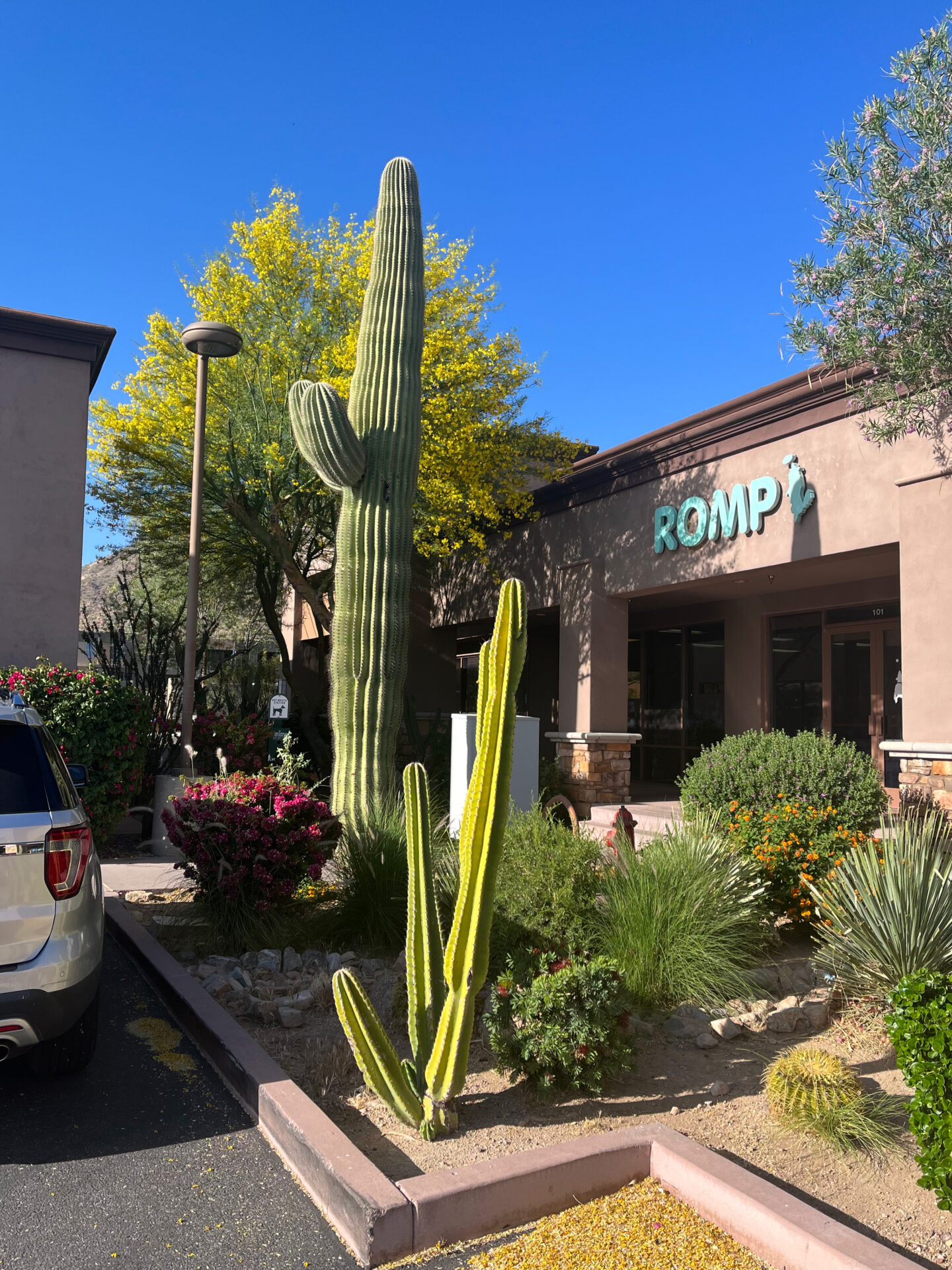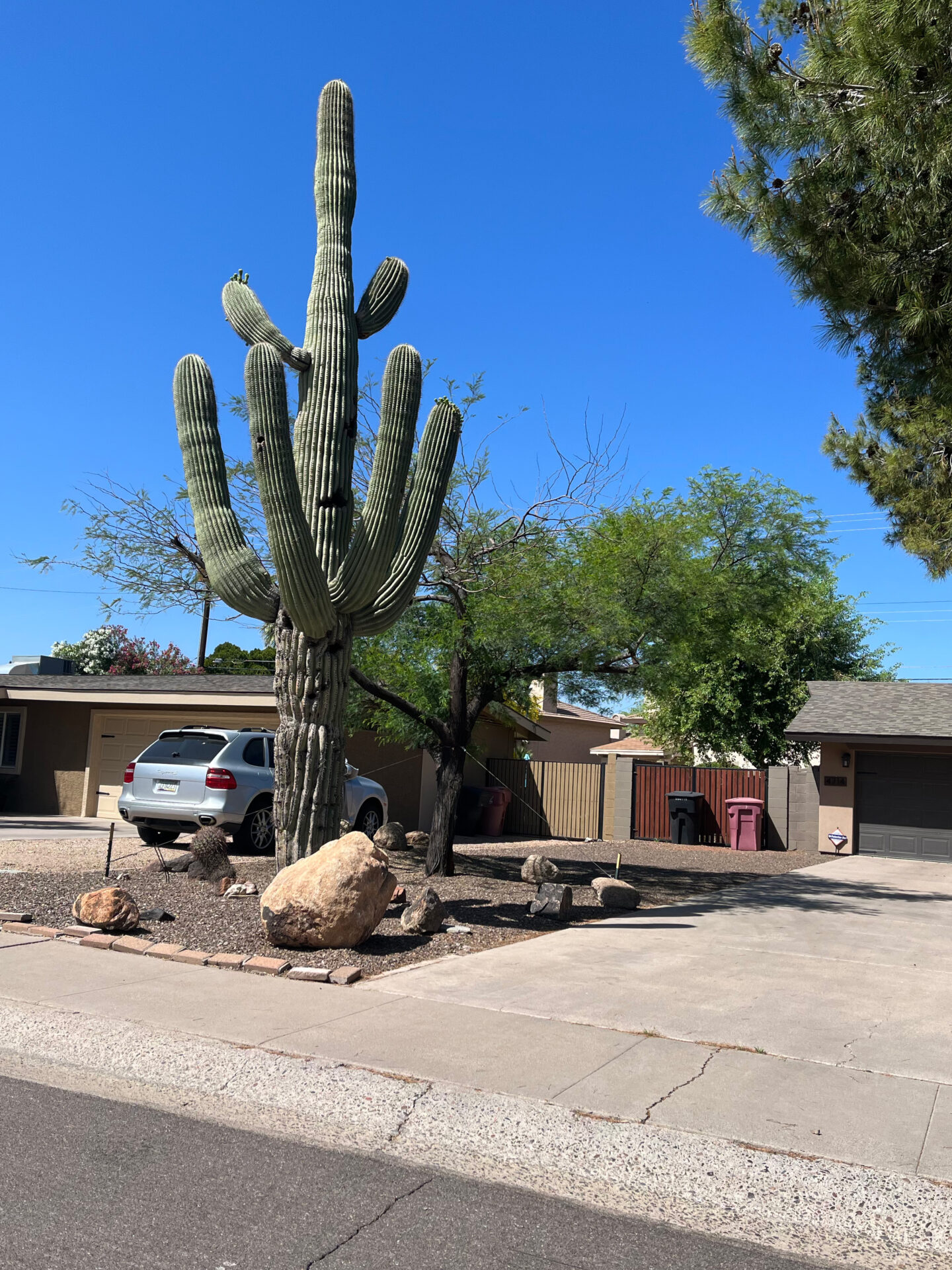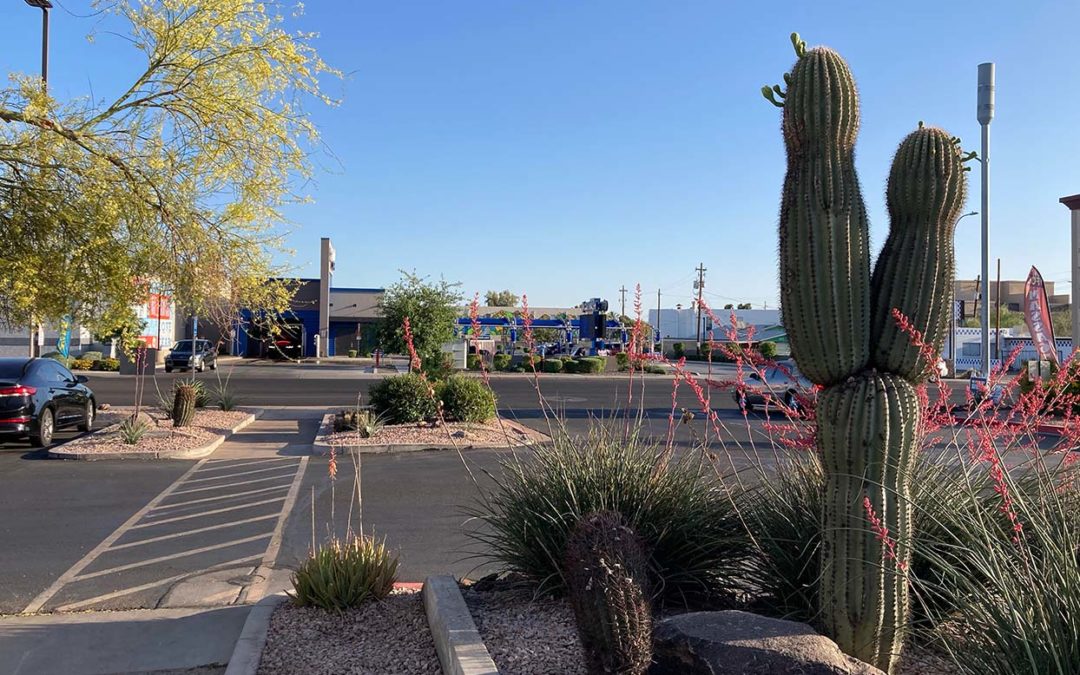During the summer of 2020, the Phoenix metropolitan area recorded its hottest summer ever. Not being able to move, the effects of those record temperatures affected the most vulnerable: plants. There were numerous reports of saguaros losing arms or falling throughout the Valley. Why did this happen? Was this related to climate change? Are we eventually going to lose all our urban saguaros? The Garden received many media inquiries looking for answers.
Saguaros are highly cherished in Arizona, and the possibility of losing them is a deep concern among many people.
Several theories were discussed, mostly related to the increasing heat and lack of rain. The Garden’s Research Department tried to answer as best as it could. However, there is not enough research to completely understand what is happening with these iconic plants, and whether this event is directly linked to climate change. We don’t even know if the number of saguaros lost is a real problem or just few incidents. If there is a problem and saguaros are dying, what can we do to save them?
Garden researchers want to address these questions and provide better answers to the community. We developed the Saguaro Project, where we will locate and count saguaros in the Phoenix area and assess their general size, age and health through the Saguaro Census. Using existing social networks and online platforms developed by our team and collaborators (Metro Phoenix EcoFlora and Save Our Saguaros), we want to involve the community in assembling the Phoenix Saguaro Database. This will include location information and pictures of the plants in the city, so we can monitor them into the future. Working with Desert Botanical Garden, people can contribute to a real-life community science project.


The Saguaro Census is just the beginning. The following steps include performing a deep and detailed study of saguaro genetics and the effects of climate change on urban plants. We will use a similar approach to 23andMe DNA testing, by sampling and sequencing the DNA of saguaros both in urban areas and in the wild, we will elucidate their ancestry. We are going to need the help of the community, including schools, homeowners, organizations and the public, to take samples. During this process, community members will increase their knowledge in science and environmental education, and the Garden’s role in the community will expand. When we find which are the sister plants of saguaros in the cities, we will study what is the effect that elevated temperatures in urban areas are having in the plants, in comparison with sister plants growing in the wild. We will also try to find the saguaro varieties that are better adapted to dry and hot temperatures, so the Garden can start promoting their propagation and introduction in the metro area. This is a novel and exciting new project proposed by the Garden, but the success of the project requires the help of the community. Together, we can improve our understanding of saguaros and develop tools to adapt our urban plants to the hotter conditions we will face in the future.
